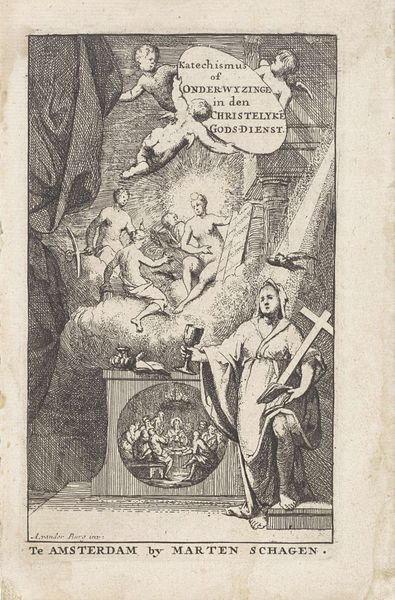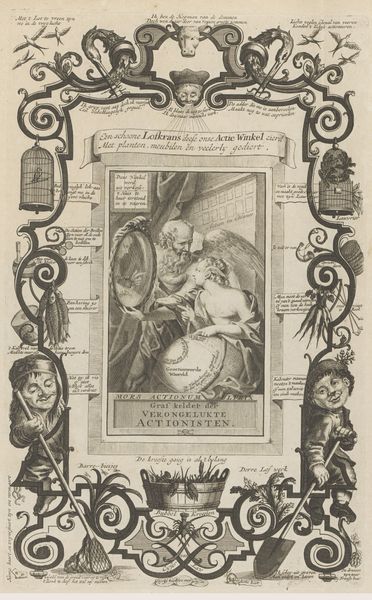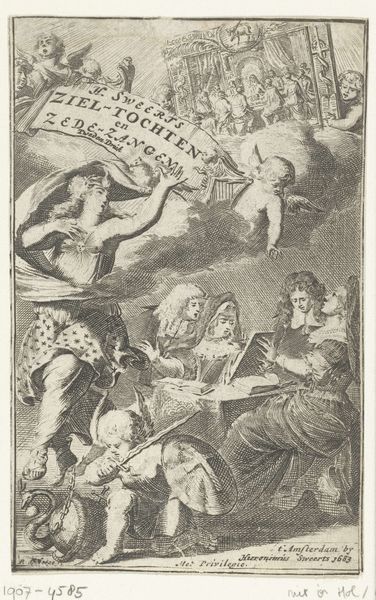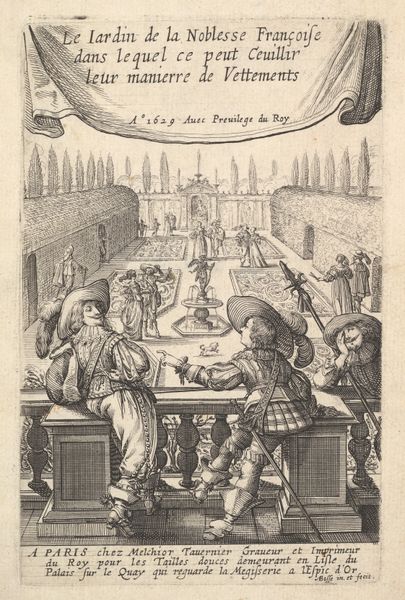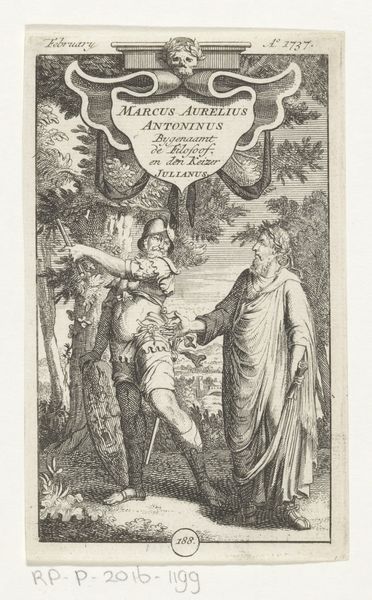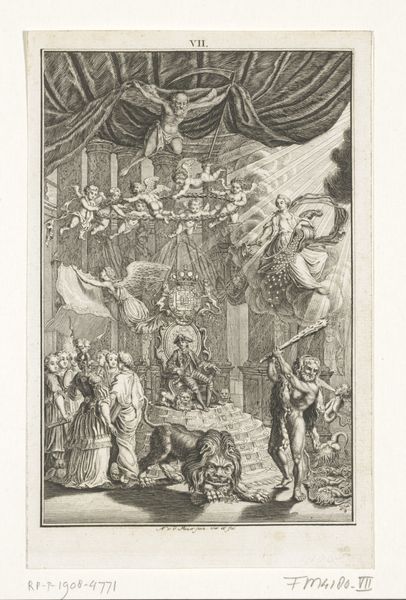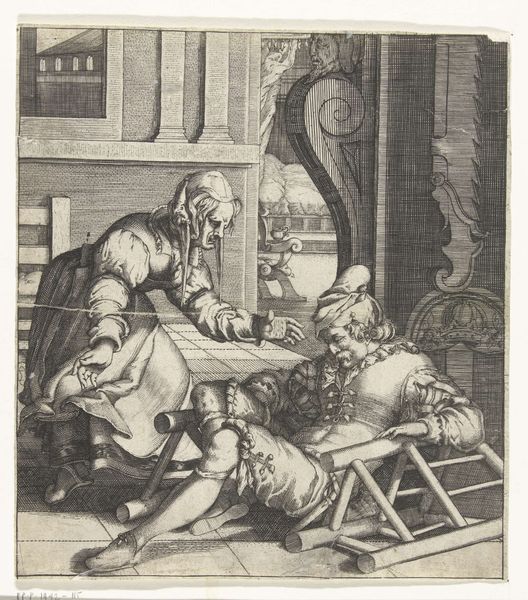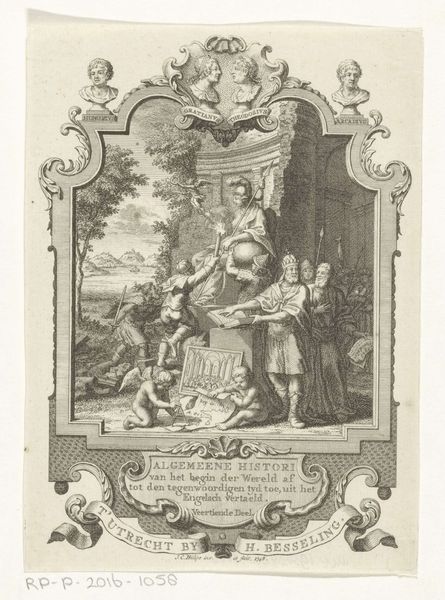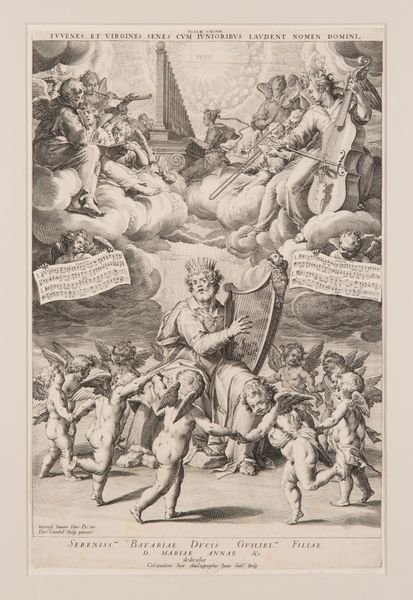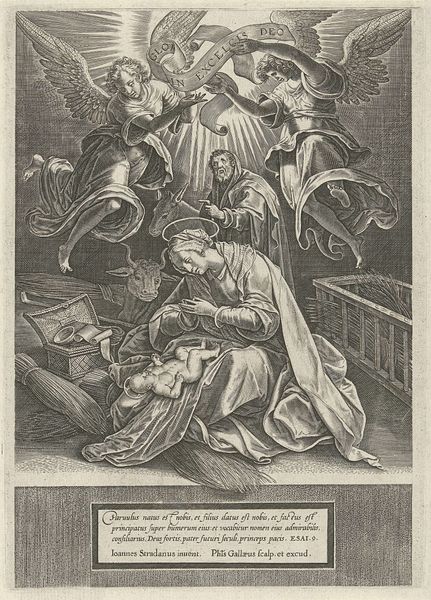
Dimensions: height 90 mm, width 66 mm
Copyright: Rijks Museum: Open Domain
Editor: We’re looking at "Man gives alms to a beggar," a print dating from sometime between 1758 and 1787, housed here at the Rijksmuseum. It looks like an etching or engraving, something very linear. There is a figure on top of what might be a sheet of paper or cloth giving something, alms presumably, to three beggars beneath. What strikes me is how carefully delineated each figure is despite the rough style. What do you see in it? Curator: What immediately commands my attention is the interplay between the lines, particularly how they establish a hierarchical composition. Notice how the horizontal lines create a grounded sense of perspective for the figures below, while the diagonal hatching above produces an elevated perspective for the almsgiver. Do you observe how the contrasting directionality of the lines segments the work's different narrative sections and implied levels of societal standing? Editor: I do now that you point it out. The different perspectives do create very clear, but subtle, distinctions. Are the figures stylistic or part of a larger commentary on the class differences within this etching? Curator: It seems important to reflect on the graphic elements employed. Etching’s lines grant the artist a great means of replicating subtle gradations in shade and tone. Consider what that hatching seeks to embody. Notice that crosshatching also appears outside each figure. Given this work's title, the use of line-based shading might propose a shared graphic condition uniting the social strata featured within the work. What do you make of that choice? Editor: I think it makes a point about shared humanity. Like everyone, despite circumstances, is made up of lines, like a sort of base element in their being? That is quite fascinating. Curator: Yes! We’ve both landed on fascinating observations through close formal readings. What a rich conversation.
Comments
No comments
Be the first to comment and join the conversation on the ultimate creative platform.
